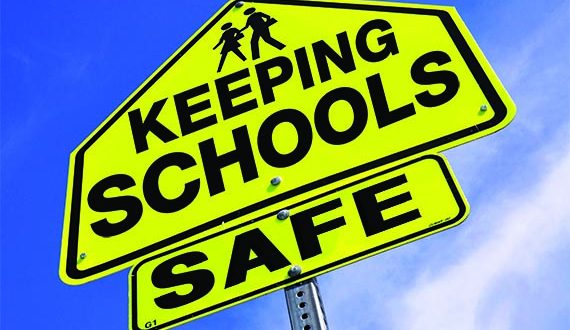
By Jasmine Pascual, Staff Writer/Webmaster
Indian Trail High School & Academy students realize school safety is more important than ever, in the wake of a national school walkout to draw attention to gun violence and remember victims of the high school shooting in Florida last month.
So how safe do IT students feel at their school? Many students interviewed by The Pulse expressed that overall they feel safe, but recent events weigh on their minds.
“Yes, I feel comfortable and safe at our school on most average days,” said Kadie Kraabel, an Indian Trail General Studies senior.
Factors that could make schools feel safer for students is knowing their friends are near.
“I feel safe because I know my bro’ has got my back if something were to happen,” said Sam Lawler, an IT Business Academy senior.
Other students weren’t afraid to say they don’t feel safe enough.
“I feel that the teachers do the best to their ability to keep us safe, but no I don’t feel safe,” said Christopher Smith, an IT Medical Sciences Academy junior.
IT students have told their parents about ALiCE or parents have at least been notified about the new school safety procedures.
Although Kenosha Unified School District has the program ALiCE in place, some students still fear that they aren’t completely safe.
“With how we are now, anyone could come into our school and cause harm to us and we wouldn’t be able to do anything about it. And while we do have ALiCE, it’s not the perfect solution,” said Smith.
ALiCE stands for Alert, Lockdown, inform, Counter, and Evacuate. Use of the program has been spreading across the country since the Sandy Hook Elementary School shooting in Newton, Conn. in 2012, as school officials look for better alternatives to respond to an active shooter than approaches used in the past.
“I feel more safe having ALiCE rather than sitting in a corner hoping they don’t come,” said Lawler.
Another student wished the school had more practice drills to cover more possible scenarios.
“ALiCE is a far better procedure than what we have done in the past. There’s unfortunately never going to be a drill or procedures that will cover 100 percent of the possible scenarios,” said Kraabel.
Smith puts focus on how fear felt during training is nowhere near as freightful as the real deal.
“ALiCE training makes me feel safer but nothing is realer than the real thing, and while you can train all you want, it’s all about the actual moment … but yes it makes me feel safer to actually know what I have to do,” said Smith.
One student suggested asking teachers questions about possible scenarios.
“I like going over all the steps and being able to ask teachers questions about the worst possible situations and what we can do during times like these,” said Haddon Harms, an IT General Studies senior.
Knowing there are on-duty police officers on school grounds, like Officer Eric Block, as well as having ALiCE in place makes students feel safer, if they weren’t feeling safe already. Several students stated because it gives the students more options than the previous procedure.
As to whether school safety procedures should be heightened even further, students had mixed responses.
“I don’t think they should be. We don’t really have a need for it because nothing happens,” Lawler said.
But other students felt the need for expanding school safety procedures because they want to prevent the school from any future tragedies so nothing does happen.
“My entire family grew up in Chicago public schools and were shocked to find out that my school didn’t have metal detectors at every entrance,” Kraabel said. “It may seem extreme and may not be possible for every school, but it’s another step that could be taken.”
A popular opinion from students was to add metal detectors at the front entrance. According to the U.S. Department of Justice, installing metal detectors in schools could range anywhere from $1,000 to $30,000, per walk-through metal detector.
An inexpensive suggestion from Smith to make school a much safer environment is for students to wear clear backpacks. Depending on where the clear backpacks are being sold, the cost is nowhere near as expensive as installing metal detectors.
“It’s difficult for any parent to picture their child in such a situation but them knowing that we have more than one option and are prepared can help put some feelings at ease,” said Kraabel.
